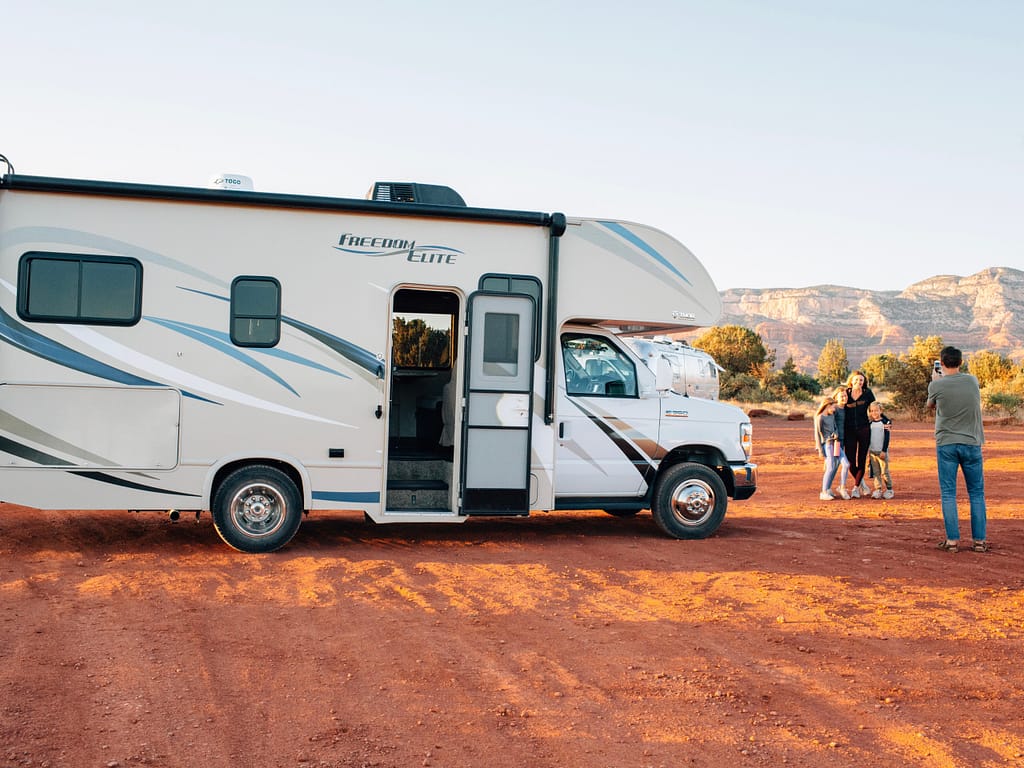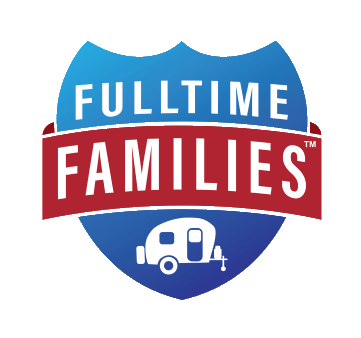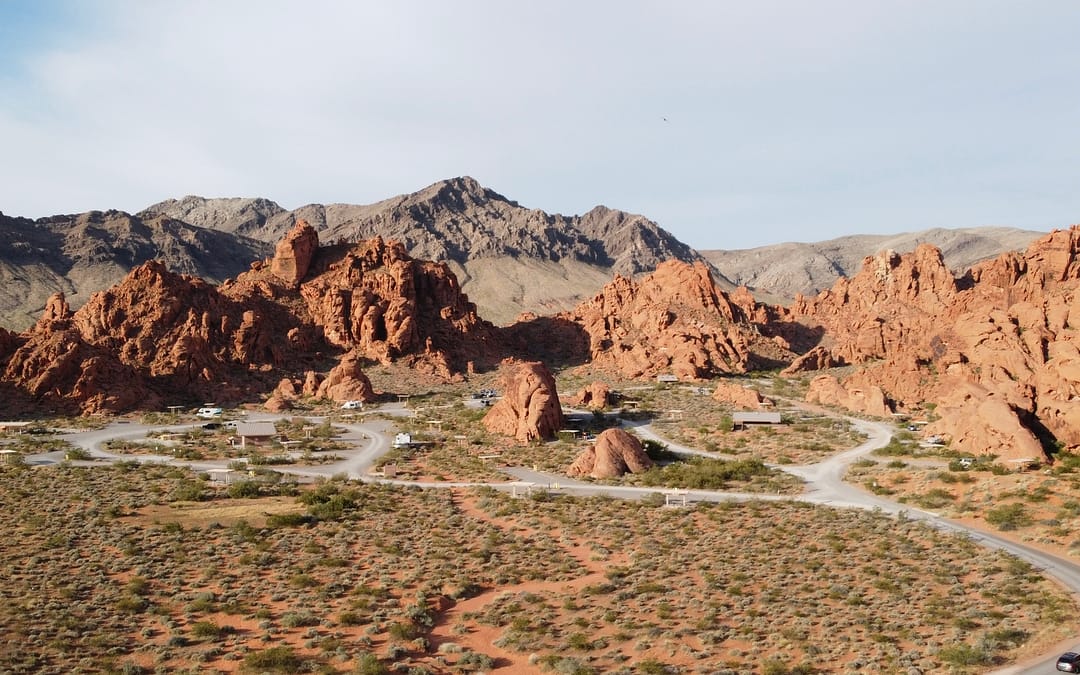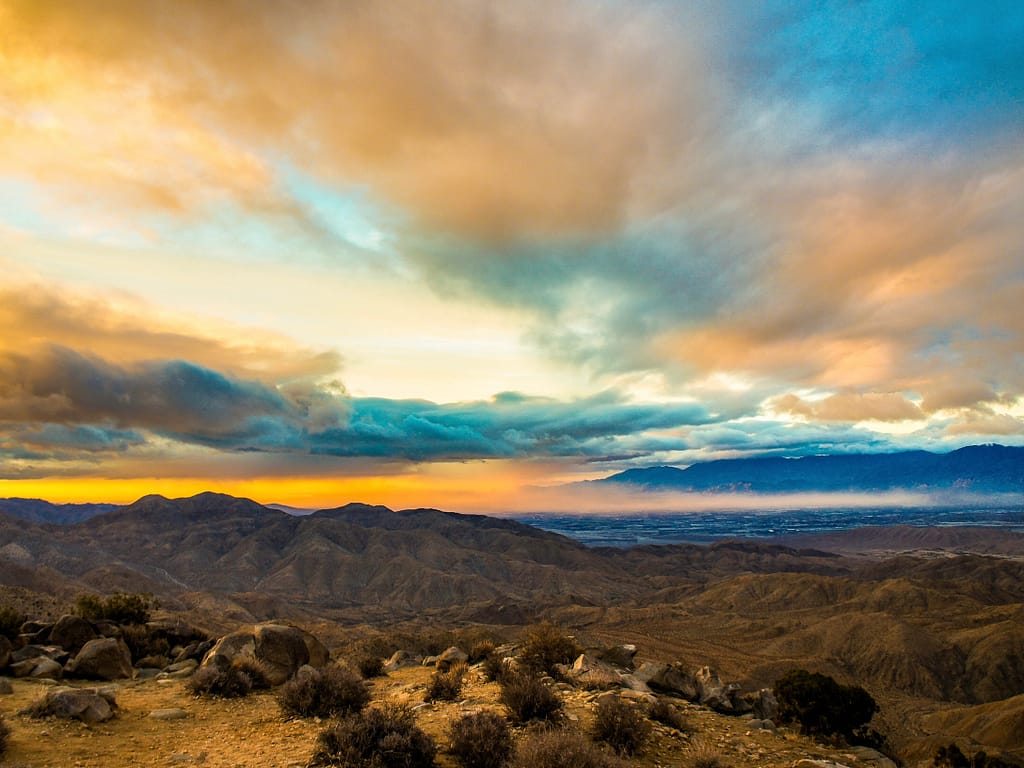This article may contain compensated links, please read our disclaimer for more information.
Camping in the desert can be a really fun experience. Many RVers head to the desert for the winter to escape the cold, and there tends to be a lot of awesome parks and natural areas to explore in the deserts of the US.
All that said, it is important that you know a few things before you go camping in the desert. Learning the ropes before you go will help you stay safe as you explore the natural wonderland that is the desert, and it’ll help make your visit a fun one.
When to Go Camping in the Desert
First, it’s important that you carefully consider when you should go RV camping in the desert.
Obviously, you don’t want to find yourself camping in that notorious 110-degree (°F) heat, so summer should be out of the question unless you 1) find a park with full hookups, 2) have two A/C units on your RV, and 3) are willing to take extra steps to keep your RV cool. Even then, you can probably count on having a hot RV during the day.
Instead of enduring those insane temps, we recommend joining the snowbirds and visiting the desert during the winter months. Winter in the desert usually means warm sunny days, but nighttime temperatures can get quite cold, so be prepared for that.
If you want to avoid the coldest winter nights as well as the extreme heat, consider timing your visit for early spring or late fall.

Finding a Spot
As mentioned above, if you will be visiting during a warmer part of the year, an RV park with hookups is a must. That said, many who visit during the winter choose to go the boondocking route.
If boondocking is your thing, you can find tons of great desert camping spots in Arizona. Campendium is a wonderful place to look for these. Free Campsites and iOverlander can also be helpful.
When searching for a good boondocking site, make sure you aren’t parked in a wash, as higher ground is always safer. Look for spots just off of decently maintained roads, and avoid extremely rutted or steep roads when possible. You can find out what to expect by reading reviews and looking at Google satellite images.
You may also need to consider whether a spot has cell coverage if you require internet for work. Starlink will provide coverage no matter where you are in the desert, and is an excellent investment if you plan to be camping in the desert for extended periods of time.
Preparing for Dust
Dust is a big deal in the desert. This stuff is everywhere and it’s inescapable. You have to go in knowing you will be dealing with dust for weeks even after you leave the desert.
The best you can do is put electronics in cases to protect them, put out an outdoor rug and tub of water for rinsing feet, and change filters on vehicles, generators, and air conditioners once you leave the area.
Creating Shade
Even during the winter, the desert sun beating down on you can get really hot. Unfortunately, trees are few and far between in the desert, meaning carrying your own source of shade is a must.
Your RV awning will work wonders for helping to keep your home cool. You may also want to invest in a Clam Tent to give yourself some shade while spending time outdoors. If you do set up a Clam, make sure you have a fan or portable A/C unit running to keep it as cool as possible.
What to Wear
Obviously, you will want to do some exploring while hanging out in the desert. Make sure you dress appropriately for those outdoor adventures. Some tips:
- Lightweight, light colored clothing will help keep you cool.
- Long pants will protect your legs from spiky desert plants.
- Solid hiking shoes will protect your feet from plants and animals.
- A wide brim hat will protect your face from the sun.
- Sunscreen will help you avoid sunburn.
- A jacket and other layers will help keep you warm if the sun goes down while you’re out.
Staying Hydrated
Staying hydrated is so, so important while camping in the desert. It’s so hot and dry that it is super easy to become dehydrated. Always carry a gallon of water per person per day in your car, and carry plenty of water when you go out hiking or adventuring. Having a bottle of water to sip at all times is a good idea.
If you feel yourself becoming dehydrated, drinking something with electrolytes is ideal. You may want to stock up on sports drinks and keep them in the fridge.
Desert Wildlife
The desert is full of wonderful wildlife. That said, many of the animals found in the desert can be dangerous to humans. This doesn’t mean you need to be afraid and avoid the desert altogether, but it does mean you should be careful.
Watch your step to avoid stepping on snakes. If you happen to be bitten by a snake, attempt to photograph/identify the snake from a safe distance, then call 911 or head to the nearest hospital. While you wait for the ambulance or drive to the hospital, remove rings and watches, wash the bite, cover the bite with a clean dressing, and mark the edge of the tenderness/swelling and the time.
If you happen upon a cougar or coyote, do not run. Pick up small children, face the animal, look at its feet, and back away slowly. If the animal acts aggressive, raise your arms to appear larger and make noise to scare it while backing away.
In general, remember to keep your distance from all wild animals and never offer food.
More Safety Tips for Camping in the Desert
It’s always important to carry a first aid kit in your hiking pack and in your RV. This is just as true in the desert as anywhere else.
We also highly recommend having RV roadside assistance in case you find yourself broken down somewhere. If your vehicle does break down in the desert, stay with it. It’s much easier to find a vehicle than a wandering person.
For the most part, camping in the desert is like camping anywhere else. That said, the small differences can be big differences if you don’t go in prepared. That’s why using the tips above is so important!
Join Fulltime Families
Fulltime Families Members get access to the best resources, community and discounts.
Fulltime Families is a participant in the Amazon Services LLC Associates Program, an affiliate advertising program designed to provide a means for sites to earn advertising fees by advertising and linking to amazon.com, amazon.co.uk, amazon.ca. Amazon and the Amazon logo are trademarks of Amazon.com, Inc. or its affiliates.


